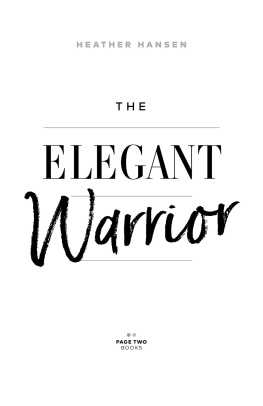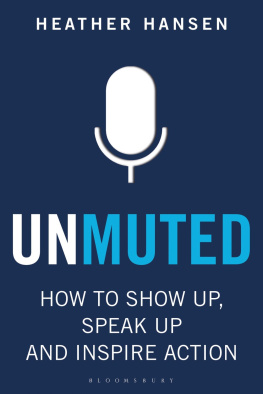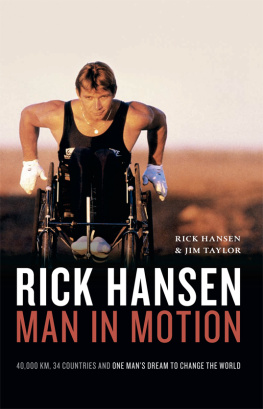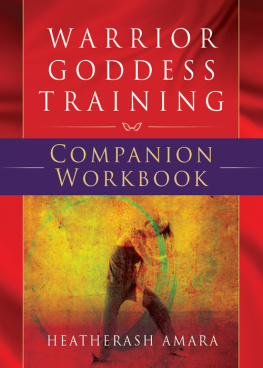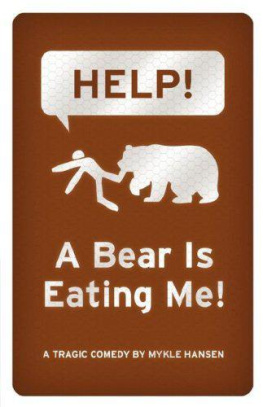INTRODUCTION
Choose Your Elegance
We are our choices.
Jean-Paul Sartre
I held back the tears until I made it to my car. I could feel them rising, hot and tight in my throat, as I stood in the courtroom. But a woman cant cry in court, not if shes a trial lawyer, and especially if, like me, shes a medical malpractice defense lawyer.
Many of my cases involve catastrophic injuries, dead mothers, paralyzed lovers, babies on feeding tubes with muscles so contracted that their whole bodies seem to be grimacing. Those people have reason to cry. We cry when we feel sadness, anger, frustration, and joy. In my work, there are always reasons to cry. But compared to those injured patients, a lawyers reasons are trivial.
My mother is a crier, and so was her mother. It may be that I learned to cry by watching them, or maybe tears are in my blood, mixed up with the platelets and blood cells. It doesnt matter so much where they come from, nature or nurture; what matters is where they go. And when Im trying a case and advocating for my client, they cant go anywhere that people might see them. Certainly not in the courtroom.
On those days when I lost a case, my tears threatened to erupt. Fortunately for me and my clients, I can count on one hand the number of cases Ive lostbut the tears Ive cried over those losses filled many handfuls of tissues. And trial lawyers have other losses. We can lose at arbitration, we can lose arguments, we can lose clients. Like you, we also experience losses outside our workplacewe can lose friends, lovers, and time. My saltiest tears have been from the times Ive lost my way.
On that day when I escaped the courtroom without crying, my Toyota RAV became my valley of tears. I felt lost. Id been practicing for twenty years. Id started at my firm when I was in law school, taking every opportunity I had to go to trial with my mentor and uncle, John. Id tried hundreds of cases, playing every role from questioning the most minor of witnesses, to standing before the jury with the weight of the entire case on my shoulders. My car had seen a lot of tears; this time, they were personal.
The case involved a young man. Hed been in pain when he first met my client, a doctor, in the emergency room. Hed been in pain for years prior to ever laying eyes on my doctor, and he was still in pain. When hed come to the emergency room, his pain was in his chest. Hed been taking medications for years, both for his pain and for his anxiety. He claimed he told my doctor he was taking large amounts of a pain medication. My client, Dr. S, documented and specifically remembered that the patient had been taking a small amount of this medication, so Dr. S ordered a small amount to be administered in the hospital. It wasnt enough, and the young man had a withdrawal seizure that broke his arm and gave him a concussion. He sued.
Before lawyers go to court, we take depositions. Depositions are where we explore the stories that will be told to the judge and the jury; speaking directly to the plaintiff, defendant, and witnesses, asking questions to explore those stories, and collecting facts we will later use at trial. During the depositions of the patients who sue my doctors, I explore the truth of their allegations.
This young man had a sad story. He had cystic fibrosis, a condition that caused him physical pain, but his suffering didnt seem to me to be purely physical. This patient had a lot that hurt, and his pain was obvious on his face and in his eyes. I felt bad for him, and I liked him. During the deposition he was sick with anxiety, and he had to go to the bathroom a number of times before we even started the process. Since he wasnt a trial lawyer or a defendant, it was okay for him to cry, and cry he did. He cried before I even asked him a question. But we had to proceed, and soon after we began, he told me hed feel better if he wasnt wearing his boots. They were Timberland boots, stiff and unyielding, and he couldnt get them off, so I got down on the floor to untie them. With his lawyer looking on, unsure what to do, I pulled, he pushed with his opposite foot, and together we laughed as the boots popped off. And then I got back to work, asking questions, probing for evidence that I could use to argue my case when we got to trial.
Many months later, it was time for trial. We tried the case for a week. Every morning I greeted the patient and his family, and every day at the end of the lunch break he offered me a mint. This may have been kindness, or it may have been manipulation. From where I sat it seemed that his family had fallen victim to his charms, and I worried the jury would, too. I knew the patients lawyer was saving him as his last witness, a strategic move meant to leave the jury with sympathy at the end of his case. I liked him, but I had to cross-examine him because I believed he was lying.
He didnt make it easy. Right before he went up to testify, he introduced me to his mother. This is the lawyer I told you about, he said. The one who was so nice to me and helped me with my shoes. Its hard to prepare for war when your opponents mother is tearfully thanking you for being nice. But trials are battles, and I am a warrior.
I put on my armor, and I tore this young mans story apart. His timing didnt make sense. His story was inconsistent with the medical record created at the time. He was contradicting not only my doctor, but also the nurses who had written in the record. It was my job to slowly and painstakingly show the jury the inconsistencies, to prove him a liar. I might be nice, but I had a job to do. And I was good at it. I killed him on cross-examination. He said hed told the nurses all of his medications, and I showed him (and the jury) each and every time in the medical record where he had left medications out of his list. He said hed never been questioned about drug-seeking behavior, and I showed him other hospitalizations where the medical providers documented those conversations with him. One by one, piece of evidence by piece of evidence, I showed the jury his lies. And I did it with a smile.
But the smile masked my own distress. On this day, after the cross-examination, I cried tears of confusion in my RAV . Was I remaining true to who I was, and who I wanted to be? Was that even possible in times of trial? I had a job to do, a client to protect, a fight to win. But I wanted to be kind and compassionate. I wanted us all to win. I knew that wasnt possible, so I wanted to be sure I was elegant in victory and graceful in defeat.
Dr. S and I won that case. The jury wanted to speak to Dr. S after the verdict, and they told him they appreciated his kindness, his compassion, and the care he rendered. They lauded my hard work and my arguments but made no mention of my empathy or my compassion. A warrior isnt often commended for her heart.
In my twenty years of practice, Ive had many successes. Ive been named one of the Top 50 female lawyers in Pennsylvania and been inducted into the American College of Trial Lawyers. But I wanted to be sure that what it took to win hadnt forced me to lose myself, my dignity, my elegance.
My grandmother, the same one who may have passed on the tendency to cry, also gave me a love of elegance. Merriam-Webster defines elegance as a refined grace, and my grandmother was elegant both in the way she looked and the way she acted. For years shed been a social worker, working outside the home long before that was the norm for women. In that role, shed been able to use her innate kindness and ability to talk to people. Even when rushing through the hospital to work with the patients shed been assigned, high heels clicking down the halls, she never had a hair out of place. Throughout the hospital she was known for her kindness, her smile, and the fact that she always wore earrings and lipstick.

